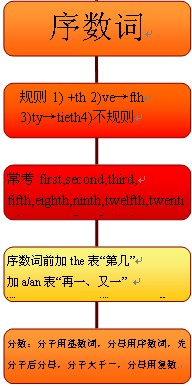请认真阅读下列短文,并根据所读内容在文章后表格中的空格里填入一个最恰当的单词。
注意:请将答案写在答题卡上相应题号的横线上。每个空格只填一个单词。
Trust is in rare supply these days. People are having trouble trusting each other, according to an AP-GFK poll conducted in November 2013, which found that Americans are suspicious of each other in their everyday life. Only one-third of Americans say most people can be trusted—down from half who felt that way in 1972. A record high of nearly two-thirds says “you can’t be too careful” in dealing with people in 2013.
This can be carried over into the workplace, where employees want their leaders to be more trustworthy. Employees have grown tired of unexpected outcomes resulting from the lack of preparation. They want to be informed of any change management efforts before—not after the fact. Employees desire to know what is expected of them and be given the opportunity to better themselves, rather than be told they are not qualified for new roles and responsibilities.
Here are four early warning signs for you to course-correct when employees are having trouble trusting their leaders.
Lack courage
Leaders that don’t stand up for what they believe in are difficult to respect and trust. Too many leaders waste too much of their valuable time trying to act like other leaders in the organization—rather than attempting to establish their own identity and leadership style. Employees know that if their leaders are not savvy (精明) enough to move themselves into a position of greater influence, it will make it much more difficult for them to get noticed and discovered as well. When leaders lack the courage to enable their full potential and that of others, it becomes a challenge to trust.
Self-centered
When a leader is only looking out for themselves and lacks any sense of commitment to the advancement of their employees—this shuts off employees quickly. Great leaders are great coaches and are always looking to help their employees grow. When leaders lack any real desire to coach or 'guide the career advancement of their employees—it becomes increasingly difficult for employees to trust them. But when leaders are too disruptive (指手画脚), their employees sense that they are in it for themselves and/or don’t trust the talent around them.
Reputation issues
When people begin to speak negatively about their leader, it makes it more difficult for others to trust their intentions. For example, look at what has happened to President Barack Obama since December 2009 when his approval rating was 69%. Four years later, Obama’s approval rating is at 43%. Many who have followed him for years are now having trouble trusting him.
Every leader must be aware that they are constantly being evaluated and thus they can never grow self-satisfied. When they do, this begins to negatively impact their reputation and the trust employees have in their leadership.
Inconsistent Behavior
People are more inclined to trust those who are consistent with their behavior. Isn’t it easy to begin questioning one’s judgment when they are inconsistent? When everyone but the leader is on board with a strategy—you begin to wonder if their intentions are to support the organization’s advancement or their own. Leaders need to refresh their leadership style before they lose the trust of their employees.
This is what today leaders must consider: how to lead in new ways that focus less on oneself, but more on the betterment of a healthier whole.
Trust between employees and their leaders
|
Problem
| 小题1: _________ has been declining among Americans in their daily life as well as in the workplace.
|
Employees’ hopes for leaders 小题2: _________ trust
| ● Employees want to be 小题3: _________ to get prepared for any change management efforts in advance.
● Employees desire to know their leaders’ expectations of them and want to get 小题4: _________ to better themselves.
|
Warnings for leaders to 小题5: _________ the breakdown of trust
|
本题信息:英语完形填空难度一般 来源:未知
本试题 “请认真阅读下列短文,并根据所读内容在文章后表格中的空格里填入一个最恰当的单词。注意:请将答案写在答题卡上相应题号的横线上。每个空格只填一个单词。Tru...” 主要考查您对 序数词 等考点的理解。关于这些考点您可以点击下面的选项卡查看详细档案。
序数词的概念:
表示顺序的数称为序数词。如:first, second, third, fourth。 序数词的构成与用法:
1、序数词的构成:
①一般来说,是由相应的基数词加词尾th构成。
例:four+th→fourth
six+th→sixth
seven+th→seventh
ten+th→tenth
②下面这些基数词在变为序数词时,有特殊的变化。
例:one→first
two→second
three→third
five→fifth
eight→eighth
nine→ninth
twelve→twelfth
③十位整数序数词的构成方法是将基数词的词y变成i,然后再加eth。
例:twenty→twentieth
thirty→thirtieth
forty→fortieth
ninety→ninetieth
④两位或两位以上的基数词变成序数词时,仅将个位数变成序数词。
例:twenty-one→twenty-first
thirty-five→thirty-fifth
a hundred and fifty-three→a hundred and fifty-third
2、序数词的用法:
①序数词在使用时,一般加上定冠词。
例:the first book
the second floor
the third day
the fourth week.
②序数词在多数情况下都用作定语,有的也可以作表语、主语和宾语。
例:The may1st is Labour Day. 五月一日是劳动节。
My room is on the second floor. 我的房间在二楼。
The first is larger than the secon.(主语)第一个比第二个大。
Read the book from the first.(宾语)从开头读这本书。
You'll be the sixth to write.(表语)你将是第六个写的。
③序数词的前面可以加上不定冠词,用来表示“再一”,“又一”的意思。
例:You may have a third try. 你可以第三次尝试。 序数词知识体系:

约数的表达方法:
用tens/dozens/scores/hundreds/thousands/millions of 表示“几十、几百、上千、成千上万”等。
如:The boy bought dozens of pencils.
Thousands of people died in the earthquake.
注意: (A):dozen, score, hundred, thousand, million等表示确切数量时,不用复数。
如:five dozen (of) eggs 五打鸡蛋
hree hundred people 三百个人
分数词的构成和用法:
1)分数词构成法:
分数词(FractionalNumerals)由基数词和序数词构成,基数词代表分子,序数词代表分母。除了分子为1的情况下,序数词都要用复数形式:
如:1/4:one-fourth
5/9:five-ninths
2/3:two-thirds
17/5:three and two-fifths
7/12:seven-twelfths
379/8:forty-seven and three-eighths
此外还有下面表示法:
如:1/2:a(one) half
1/4:a(one) quarter
3/4:three-quarters
9/4:two and a quarter
3/2:one and half
31/4:seven and three quarters
与“请认真阅读下列短文,并根据所读内容在文章后表格中的空格里...”考查相似的试题有:
|